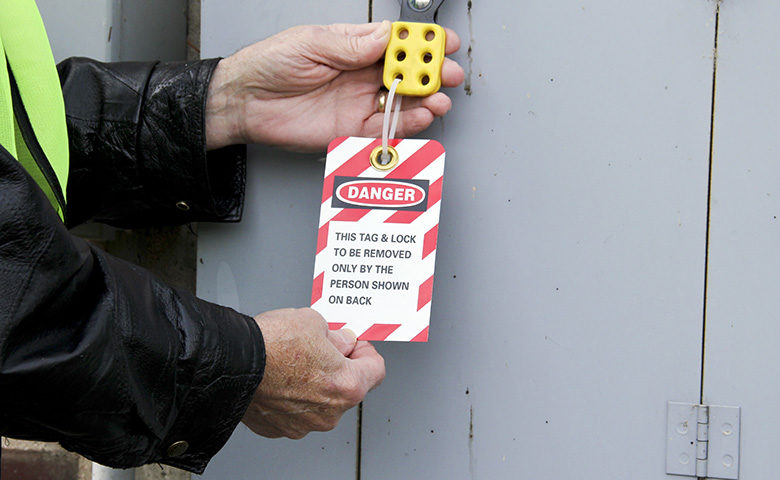Lockout/tagout procedures control hazardous energy by ensuring equipment is de-energized and isn’t turned on unexpectedly during maintenance, setup and repair operations. Training is particularly important in this area not only for the workers who are involved in the practice of locking out and tagging out (authorized employees) but for anyone in the workplace that uses the machinery (affected employees).
Ideally, authorized and affected employees should be trained in separate sessions to avoid confusion between their required training. When that’s not possible, it’s vital that the training session cover the requirements separately as described under OSHA’s lockout/tagout standard (1910.147(c)(7)) for authorized and affected employees. In particular, affected employees need to know that they may not carry out any of the duties of an authorized employee.
However, even if both groups are trained separately, it is still important to instill a shared understanding that each group has a distinct role to play and that everyone’s responsibilities can be affected by human factors. For example, authorized employees will naturally feel a lot of pressure to get a piece of equipment back online quickly if it breaks down unexpectedly. Affected employees need to know that this rushing can cause the authorized employee to overlook a critical step and asking questions about how soon it will be back online only distracts them while adding pressure and frustration.
Year after year, LOTO compliance is listed as one of OSHA’s top ten most-cited violations—not because procedures aren’t in place but because people have deviated from those procedures over time. Even though refresher training isn’t required by the OSHA standard, a toolbox talk is a good reminder for maintaining safety, especially for essential procedures like LOTO and the common human factors associated with them. Without that reminder, the effectiveness of the LOTO program will diminish over time as memory fades and complacency increases.
One of the best ways to demonstrate the hazards involved with LOTO is by telling a story that provides an injury example or one with a near-miss. Once you’ve captured their attention, bring it back to the basics. Start by showing your company’s written lockout document that explains the elements of your program (make copies for those that want to take it away to read it.) Identify all of the equipment in your facility that would be required to be shut down and pinpoint the energy sources. Task-specific procedures should be documented to ensure they’re done correctly—your toolbox talk is the perfect time for an overview. If certain equipment is a bit tricky, a demonstration is a great teaching tool for those that may not operate it regularly.
Spell out when LOTO is required—before repairs, maintenance or service on equipment, or before any work that requires a worker to place any part of their body on or in an operating machine. Identify all switches, breakers, valves, and plugs for energy isolation. Show authorized employees where the proper lockout/tagout devices are kept.
Here are some additional important reminders to keep in mind when developing your toolbox talk:
- Notify workers in the area that LOTO-related work will be taking place.
- One person, one lock, one key.
- Only the person that put on the lock and tag can remove it.
- Before walking away:
- Disconnect all primary sources of energy—electricity, gas, compressed air, steam or water.
- Authorized employees must ensure that controls have shut down the machine—check that it’s disconnected and isolated it from its energy source.
- Test that the equipment is properly locked out to ensure the machine can not start accidentally.
- Make sure any secondary sources of hazardous energy—pneumatic, hydraulic or spring-loaded parts—are locked out.
- Check that the right information is on the tag.
- Once complete, return the equipment to proper operation and ensure it’s functioning correctly.
- Notify workers that LOTO-related work has been completed.
- Supervisors should walk through the toolbox talk with someone from their safety department or committee to ensure the accuracy of the procedures and clarity of the message before delivering it to their team. They should also have a sound understanding of human factors and how to effectively and positively communicate the risks associated with them.
Use your toolbox talk to discuss common problems with the lockout/tagout procedure within your facility. This is not a time to blame workers. Instead, view it as a great opportunity to do a general overview of the things that could use improvement. Even when things are going well, a toolbox talk will serve as a great reminder to help keep workers safe and keep that safety top of mind. It also opens the door for discussion if employees have any questions/concerns about LOTO or electrical safety.

